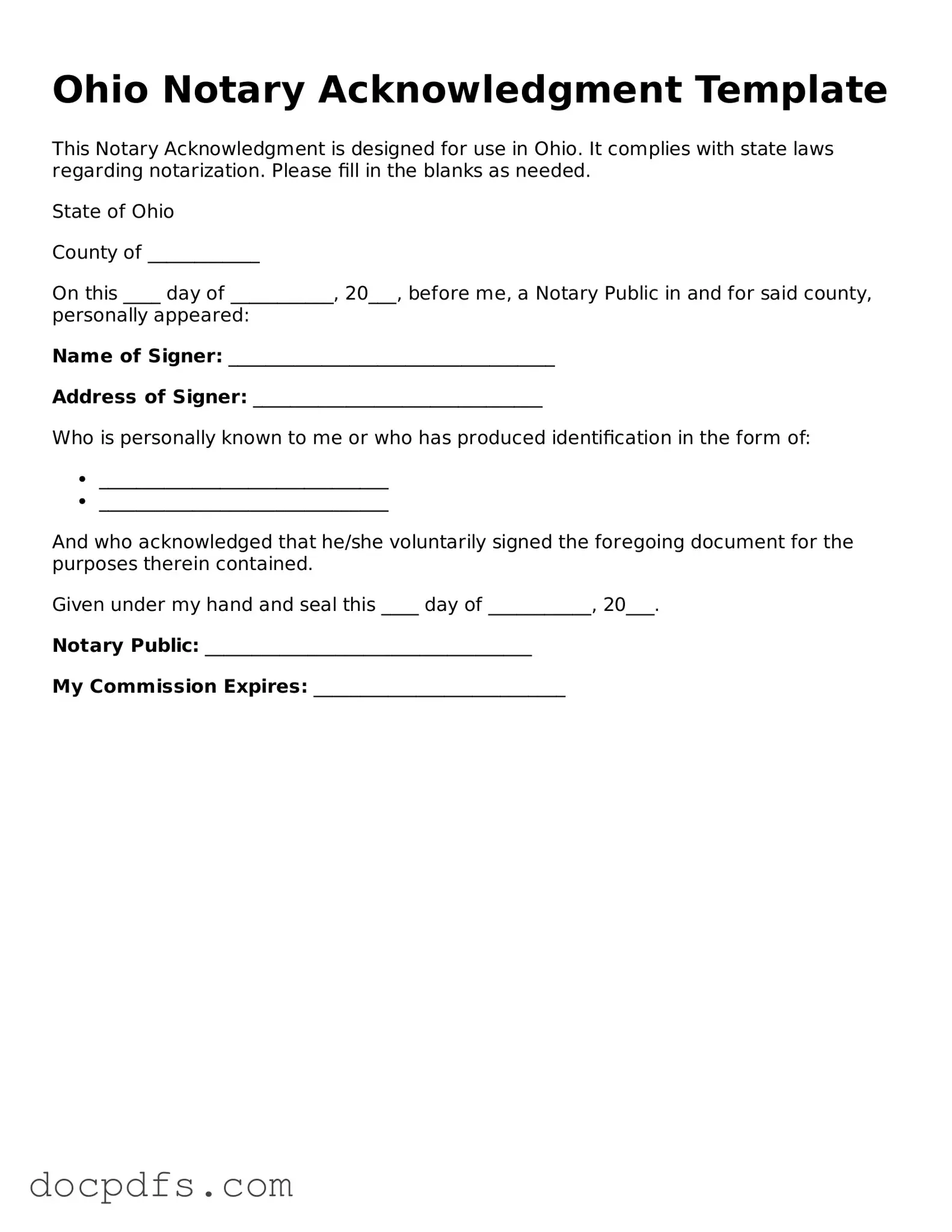In the realm of legal documentation, the Ohio Notary Acknowledgement form plays a pivotal role in affirming the authenticity of signatures on various documents. This form serves as a crucial tool for individuals seeking to ensure that their agreements, contracts, or other important papers hold up in a court of law. By confirming that a signer is who they claim to be and that they willingly signed the document, the notary public adds a layer of protection against fraud. The form typically includes essential details such as the name of the signer, the date of the acknowledgment, and the notary's official seal, which together create a legally binding record. Additionally, it is important to note that the notary must witness the signing of the document in person, further solidifying the integrity of the acknowledgment process. Understanding the nuances of this form is not only beneficial for those involved in legal transactions but also vital for anyone looking to navigate the complexities of Ohio's legal landscape with confidence.
